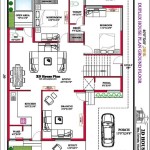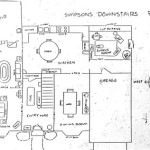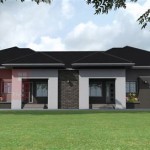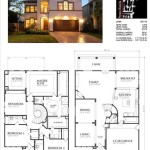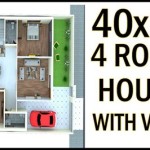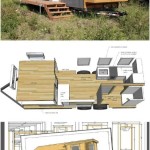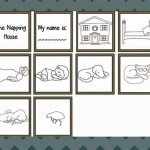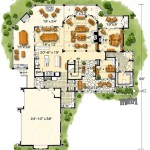30 by House Plans East Facing: A Comprehensive Guide
East-facing houses are highly sought after in many cultures due to the auspicious association with the rising sun. This preference, combined with the practical benefits of morning sunlight, creates significant demand for well-designed 30 by house plans oriented towards the east. This article will explore various aspects of these plans, offering insights into design considerations, advantages, and potential challenges.
A 30 by house typically refers to a dwelling built on a plot approximately 30 feet wide. The length of the plot can vary, influencing the overall square footage and layout possibilities. When designing an east-facing house on a 30-foot wide plot, maximizing natural light and ventilation becomes paramount. Architects often employ strategic placement of windows, doors, and internal spaces to achieve these goals.
One of the primary advantages of an east-facing house is the abundance of morning sunlight. This natural light can significantly reduce the need for artificial lighting, leading to lower energy bills. Furthermore, the warmth of the morning sun can contribute to passive heating during colder months, further enhancing energy efficiency. The soft, diffused light of the morning is also considered ideal for activities like reading and studying, creating a pleasant and productive indoor environment.
The orientation of the house also impacts the placement of various rooms. In an east-facing design, living rooms and bedrooms are often positioned to benefit from the morning sun. Kitchens and dining areas might be situated towards the west to capture the afternoon light. Careful consideration of these placements can optimize the functionality and comfort of each space.
Designing a 30 by house plan requires a careful balance between space utilization and functionality. With a limited width, maximizing every square foot becomes crucial. Smart storage solutions, multi-functional furniture, and open-plan layouts can create a sense of spaciousness while ensuring efficient use of the available area.
The length of the plot significantly influences the layout options. A longer plot allows for a more linear arrangement of rooms, while a shorter plot might necessitate a more compact, two-story design. Understanding the constraints and possibilities presented by the plot dimensions is essential for creating a functional and aesthetically pleasing home.
Ventilation is another critical aspect of house design, particularly in warmer climates. East-facing houses can benefit from cross-ventilation by strategically placing windows and doors to allow for the flow of air. This natural ventilation can reduce the reliance on air conditioning, further contributing to energy savings and a healthier indoor environment.
Privacy considerations also play a role in the design process. The placement of windows and the design of the facade can be adjusted to ensure privacy from neighboring properties or the street. Landscaping and boundary walls can further enhance privacy while adding to the aesthetic appeal of the property.
Building regulations and local bylaws can influence the design and construction of an east-facing house. Setback requirements, height restrictions, and parking regulations must be adhered to. Consulting with local authorities and experienced architects is essential to ensure compliance with all applicable regulations.
Budget constraints are a significant factor in any construction project. The cost of building a 30 by house can vary depending on the materials used, the complexity of the design, and the location. Working closely with an architect and a contractor can help manage costs and ensure that the project stays within budget.
The choice of building materials can significantly impact the overall cost and aesthetic of the house. Brick, concrete, wood, and steel are common choices, each with its own advantages and disadvantages. The selection of materials should consider factors like durability, maintenance requirements, and local climate conditions.
Sustainable building practices are increasingly important in modern construction. Incorporating energy-efficient features like solar panels, rainwater harvesting systems, and insulation can reduce the environmental impact of the house and contribute to long-term cost savings.
Landscaping can enhance the curb appeal and functionality of an east-facing house. Carefully chosen plants and trees can provide shade, privacy, and aesthetic beauty. The design of the landscape should complement the architecture of the house and create a welcoming outdoor space.
Maintenance considerations are essential for the long-term upkeep of the house. The choice of materials, the design of the roof, and the landscaping can all impact the maintenance requirements. Planning for regular maintenance can prevent costly repairs and ensure the longevity of the house.
Technological advancements are constantly evolving the field of architecture and construction. Smart home technology, 3D printing, and prefabricated construction methods are increasingly being incorporated into residential projects, offering new possibilities for design and construction.
Accessibility features should be considered during the design phase, especially if the house is intended for individuals with mobility challenges. Ramps, wider doorways, and accessible bathrooms can ensure that the house is comfortable and accessible for all occupants.
Security features are an important consideration in any house design. Incorporating security systems, robust locks, and well-lit exterior spaces can enhance the safety and security of the occupants.
The aesthetic appeal of the house is often a top priority for homeowners. The design of the facade, the choice of colors, and the landscaping can all contribute to the overall aesthetic appeal of the property.
The surrounding environment plays a significant role in the design of an east-facing house. The climate, the topography, and the proximity to amenities should be considered during the design process.
Flexibility in design is crucial to accommodate future needs and lifestyle changes. Designing a house that can adapt to changing family dynamics and evolving needs can enhance its long-term value and functionality.
Consulting with experienced architects and designers is essential for creating a well-designed and functional east-facing house. Their expertise can ensure that the design meets the specific needs and preferences of the homeowner while adhering to all applicable regulations and budget constraints.
Proper planning and execution are critical for the success of any construction project. A detailed plan, a reliable contractor, and regular monitoring can ensure that the project is completed on time and within budget.
Effective communication between the homeowner, the architect, and the contractor is essential throughout the construction process. Clear communication can prevent misunderstandings and ensure that the project progresses smoothly.
Regular inspections during the construction process can help identify and address any potential issues early on. Thorough inspections can ensure that the construction meets quality standards and adheres to the design specifications.

30x30 East Facing House Plans 900 Sq Ft Plan 30 30x30housepl Unique Small Little 30x40

30x30 East Facing House Plans Plan 3bhk 900 Sq Ft 30x30houseplan Simple Unique Small 2bhk

20x30 East Facing House Plan Map Studio

20x30 East Facing House Plan Map Studio

30x30 House Plan East Facing Plans 2bhk 900 Sq Ft Design 30x40 Little

House Plans Daily On Linkedin 30 East Vastu Plan Drawing Is Given In This Article The Total

30 X40 East Facing House Plan Is Given As Per Vastu Shastra In This Autocad Drawing File The Total B Little Plans Layout Simple

30x40 House Plan East Facing Ghar Ka Naksha Dk 3d Home Design

30 X 40 House Plans With Images Benefits And How To Select Plan

20x30 House Plan East Facing Vastu

